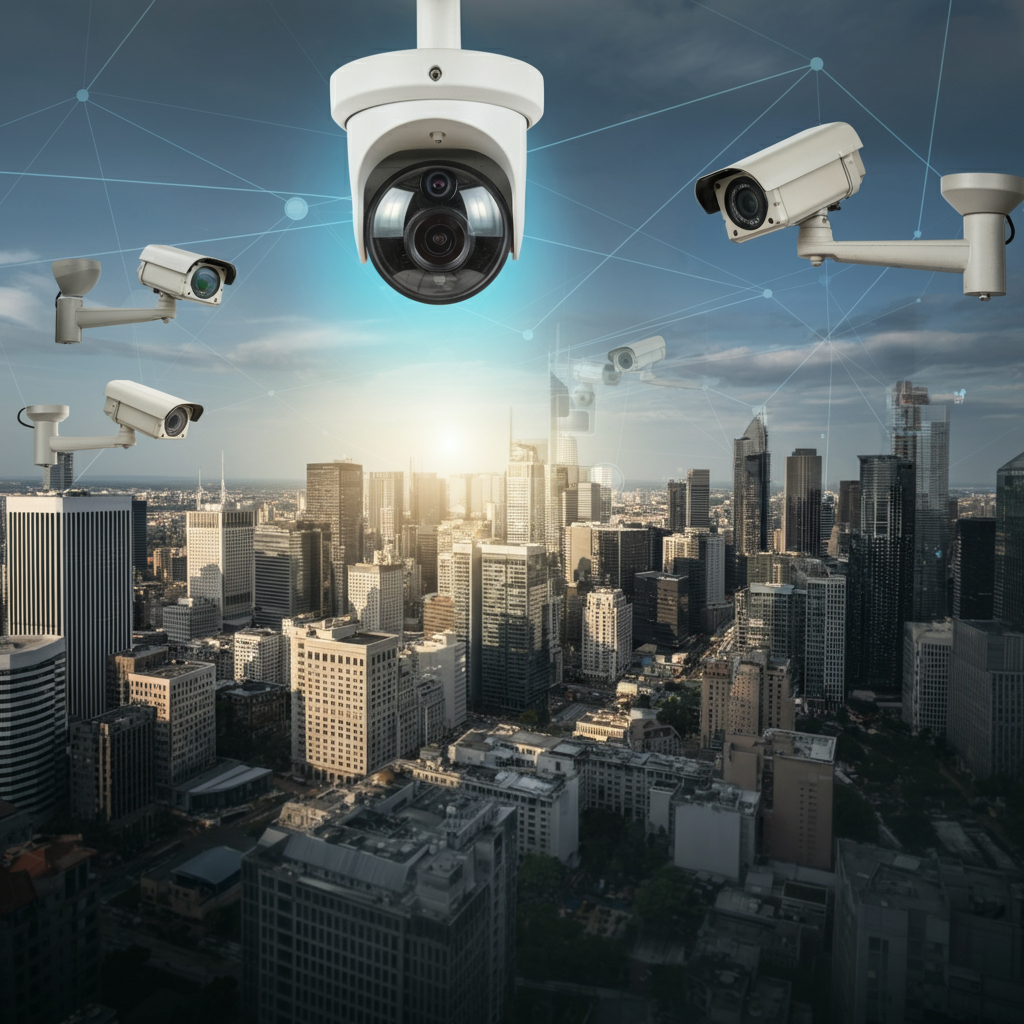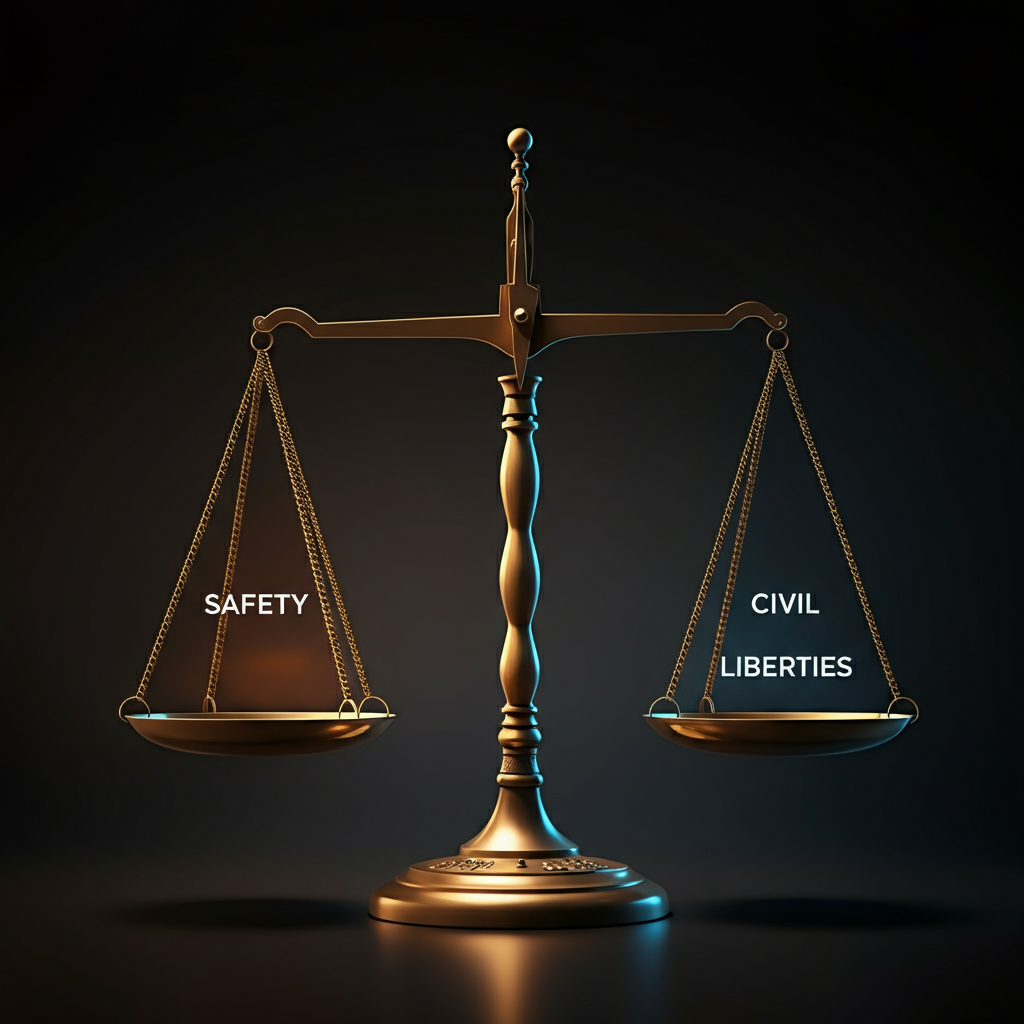Artificial Intelligence (AI) has become an indispensable tool for modern law enforcement agencies. Technologies such as facial recognition, predictive analytics, and data-driven decision-making are transforming how crimes are prevented, solved, and monitored through the use of AI technology. However, as these tools become more pervasive, they raise serious questions about ethics, privacy, and the need for regulatory oversight.
This article explores how AI is being implemented in law enforcement and surveillance in 2024, the societal implications, and the evolving landscape of laws governing these technologies.
Introduction to AI in Law Enforcement
Artificial intelligence (AI) has revolutionized various industries, and law enforcement is no exception. The integration of AI in law enforcement has transformed the way agencies operate, from data analysis to predictive policing. In this section, we will explore the definition of AI, its applications in law enforcement, and the current state of AI adoption in the field.
Definition of Artificial Intelligence and its Applications in Law Enforcement
Artificial intelligence refers to the development of computer systems that can perform tasks that typically require human intelligence, such as learning, problem-solving, and decision-making. In law enforcement, AI is used in various applications, including:
Predictive Policing: AI algorithms analyze historical crime data to predict future crime patterns and identify high-risk areas. These predictive policing tools help law enforcement agencies allocate resources more effectively and prevent crimes before they occur. Law enforcement agencies increasingly leverage predictive policing technologies to allocate resources strategically.
Facial Recognition Technology: AI-powered facial recognition software is used to identify suspects and track individuals in real-time. This technology enhances the ability of law enforcement to monitor public spaces and ensure safety.
Data Analysis: AI systems analyze large datasets to identify patterns and connections that may not be apparent to human analysts. This capability allows law enforcement to uncover hidden trends and make data-driven decisions.
Machine Learning: AI algorithms learn from data and improve their performance over time. This continuous learning process enables law enforcement agencies to make more accurate predictions and decisions, enhancing their overall effectiveness.
Brief History of AI Adoption in Law Enforcement
The adoption of AI in law enforcement has been gradual, with early experiments in the 1990s and 2000s. Initially, AI technologies were limited in scope and application. However, advancements in machine learning and data processing capabilities have significantly expanded the potential of AI in law enforcement. By the 2010s, AI began to gain widespread acceptance, with various law enforcement agencies around the world integrating AI-powered tools into their operations. Today, AI is a critical component of modern policing, from local police departments to federal agencies.
Current State of AI in Law Enforcement
The current state of AI in law enforcement is characterized by rapid growth and innovation. Law enforcement agencies are increasingly adopting AI-powered tools and technologies to improve their operations and enhance public safety. These advancements include sophisticated facial recognition technology, predictive policing tools, and advanced data analysis systems. AI-powered video analysis tools expedite the processing of large volumes of video data for law enforcement, further enhancing their efficiency. However, the widespread adoption of AI also raises significant concerns about data protection, privacy, and civil liberties. As AI technologies continue to evolve, it is crucial for law enforcement agencies to address these concerns and ensure that AI is used responsibly and ethically.
The Growing Role of AI in Law Enforcement
Over the last decade, law enforcement agencies have embraced AI technologies to enhance their operational capacity. However, the implementation of an AI system in law enforcement also brings challenges, such as potential biases and ethical dilemmas, which need to be addressed. From monitoring public spaces for safety to identifying suspects, AI’s ability to analyze vast amounts of data has revolutionized traditional policing methods. Additionally, AI integration with social media monitoring tools provides valuable insights into criminal activities and potential threats.
Key AI Applications in Law Enforcement
Facial Recognition SystemsAI-powered facial recognition tools, a form of artificial intelligence technology, can identify individuals in public spaces using surveillance cameras. These systems are employed to track suspects, locate missing persons, and monitor large events for security.
Predictive AnalyticsLaw enforcement uses predictive AI tools to forecast likely criminal activities or hotspots. By examining past trends and data, these systems aim to prevent crimes before they occur.
Crime Pattern AnalyticsAI analyzes data to uncover patterns in criminal behavior, helping law enforcement strategize and allocate resources effectively.

AI Technologies and Applications
Ethical and Privacy Concerns
While AI brings efficiency and precision to law enforcement, it also raises significant ethical and privacy challenges. These challenges are particularly pronounced within the criminal justice system, where the use of AI can exacerbate existing biases and raise concerns about privacy and civil liberties. Surveillance and data collection disproportionately affect communities of color, further highlighting the need for equitable and ethical AI practices.
Privacy Violations with Facial Recognition Technology
Mass Surveillance
AI-powered facial recognition can result in mass surveillance, infringing on individuals’ right to privacy. The technology’s capacity to track movements in real time blurs the line between security and intrusion.Data Collection and Misuse
The vast amount of personal data collected by these systems opens the door to potential misuse or unauthorized distribution.Misidentification Risks
Facial recognition technology can lead to misidentification and wrongful arrests, especially for people of color.
Ethical Dilemmas
Bias in Algorithm Decision-Making
AI systems are only as unbiased as the data they are trained on. Racial and gender bias in algorithms can lead to unfair arrests or profiling.Over-Dependence on AI
Relying too heavily on AI could dehumanize decision-making, leading to judgments devoid of human compassion or understanding.

Regulatory Shifts in 2024
The rapid implementation of AI in law enforcement has prompted governments worldwide to address its ethical and legal implications.
Regulatory Developments
Banning Facial Recognition in Some Regions
Several cities and countries have moved to ban or restrict the use of AI-powered facial recognition due to privacy concerns.Transparency Mandates
New regulations require law enforcement agencies to disclose how AI tools are used and ensure accountability for their decisions.Algorithm Audits
Policymakers are advocating for regular audits of AI systems to uncover biases and improve fairness.
Global Perspectives
Different nations approach AI regulation with varying levels of intensity. While some prioritize technological innovation, others focus on safeguarding human rights.

The Fine Line Between Safety and Civil Liberties
Finding the right balance between public safety and individual freedoms is a critical challenge. While AI in law enforcement enables quicker resolutions and safer communities, it must not come at the cost of fundamental rights.
Striking a Balance
Encouraging dual oversight from both technology experts and civil liberties organizations.
Supporting community engagement to educate citizens on how AI systems are used and their benefits or risks.
Developing clear ethical guidelines to ensure AI is used only to enhance, not undermine, civil liberties.

Looking Ahead
The use of AI in law enforcement and surveillance will only increase. With advanced systems becoming more affordable, the technology is expected to penetrate even smaller jurisdictions. However, this growth makes it imperative to establish stronger rules and safeguards to prevent abuse.
By adopting more transparent systems, introducing regular audits, and addressing ethical concerns head-on, society can ensure that AI becomes a tool for good without eroding fundamental freedoms.
The ongoing evolution of AI in law enforcement is an intersection of technology, ethics, and humanity. With thoughtful regulations and public understanding, we can harness AI’s power while safeguarding individual rights.
